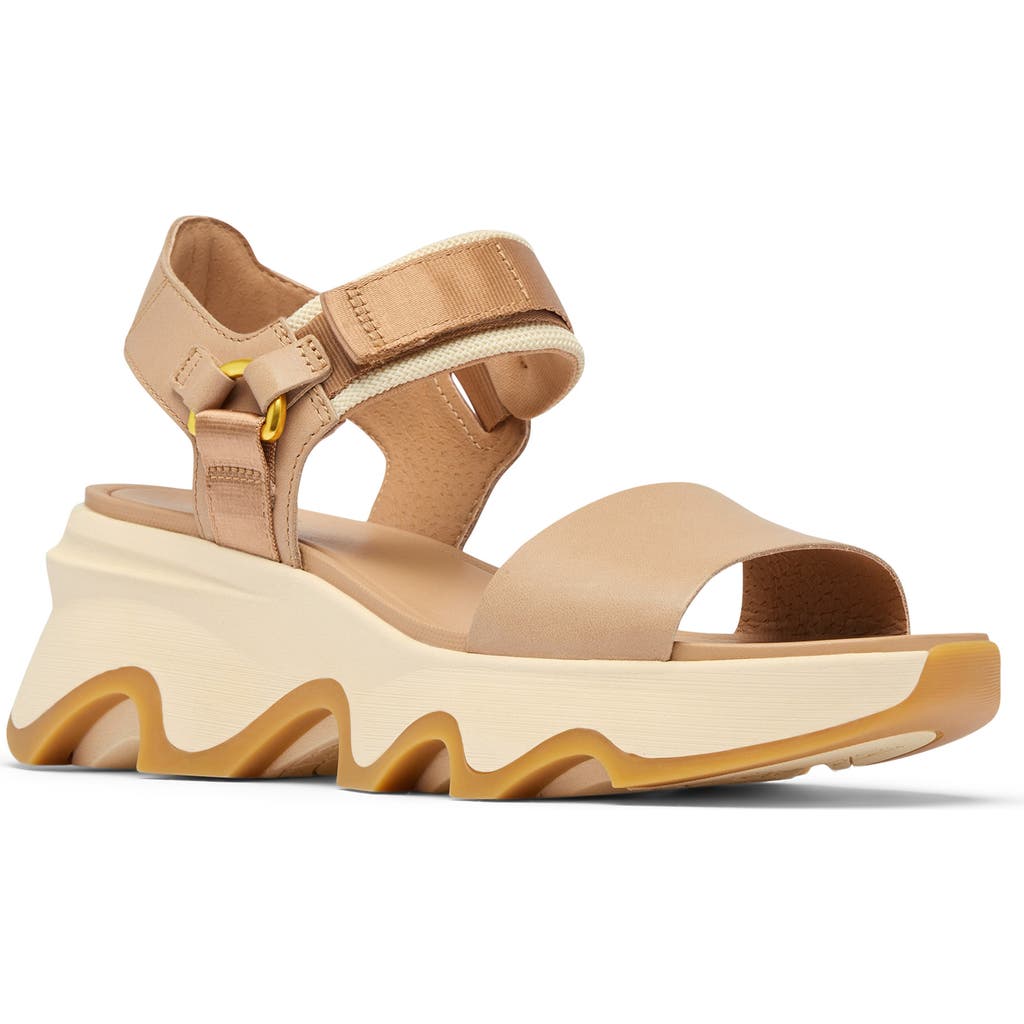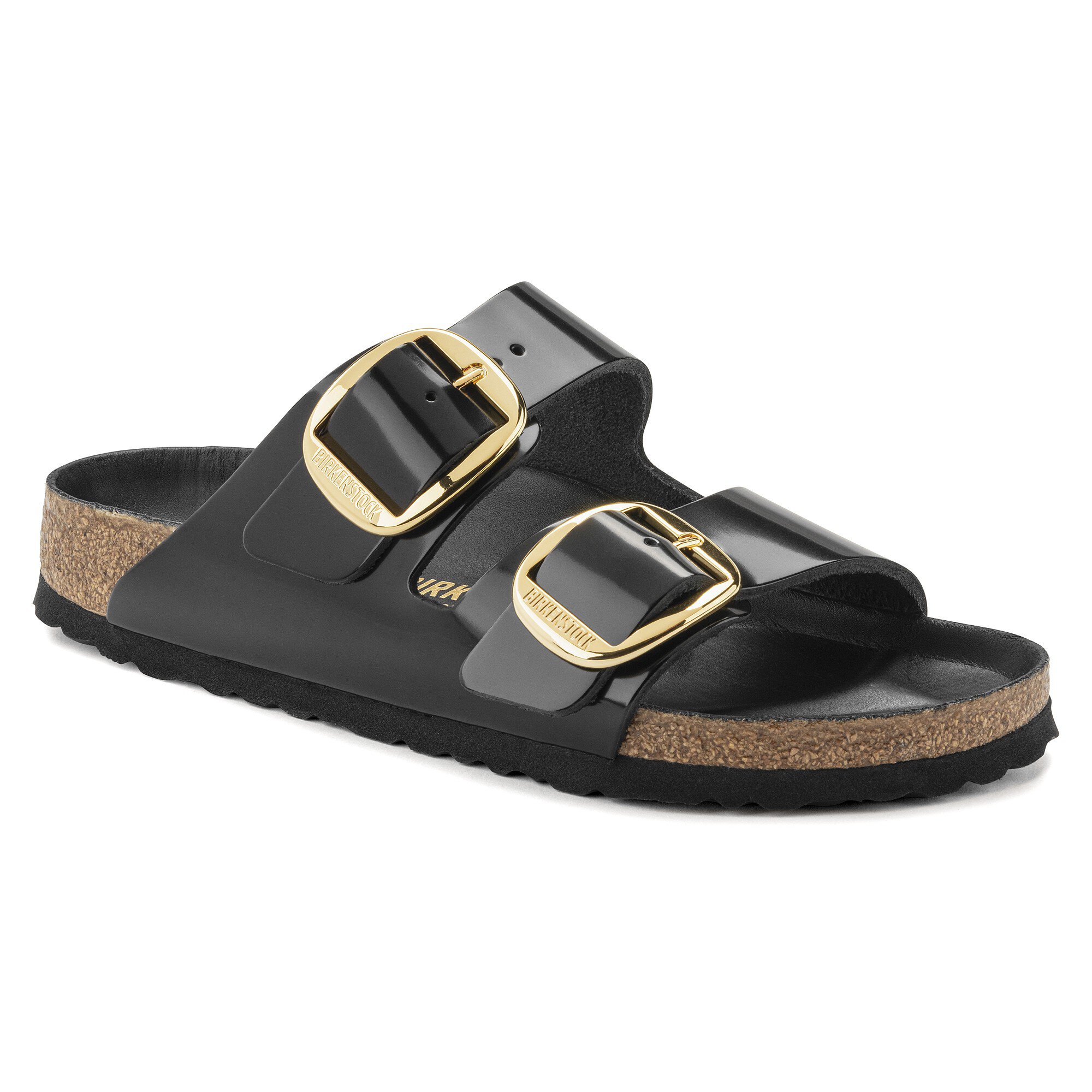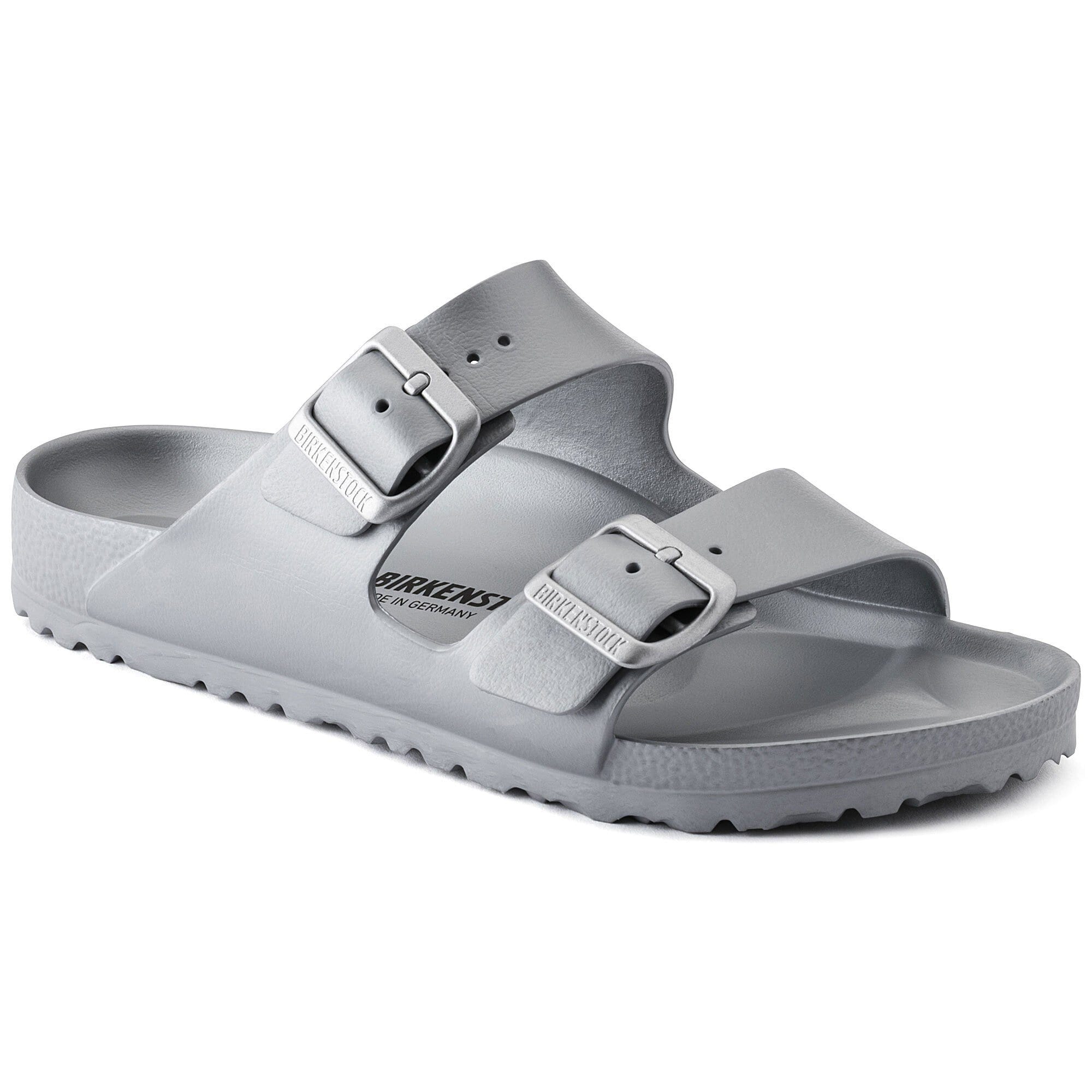Our editors independently select these products. Making a purchase through our links may earn Well+Good a commission
The 7 Best Sandals With Arch Support Podiatrists Are Begging You to Try
Step out in style (and comfort) with these top designs.

When people feel the need to justify using assistance of some sort, they may say, “Well, I wouldn’t run a marathon barefoot.” No matter the scenario in which they’re invoking the cliché, they’re generally not referring to literal footwear. But, the saying is rooted in some actual truth: Experts say it wouldn’t serve you to white-knuckle it through the discomfort of wearing shoes (or lack thereof) that don’t support the arches of your feet for any period of time, whether you’re wearing running shoes, slippers, or sandals.
Experts in This Article
board-certified podiatric surgeon and founder of Gotham Footcare
board-certified podiatrist and founder of Step Up Footcare in New York City
board-certified podiatrist, foot and ankle surgeon
“All people should prioritize sandals with adequate arch support,” says Miguel Cunha, DPM, podiatrist and founder of Gotham Footcare in New York City. “Arch support is important for maintaining foot health and overall body alignment," he adds.
Even if your feet feel comfy in any shoe, board-certified podiatrist Nelya Lobkova, DPM, founder of Step Up Footcare in New York City, urges you to prioritize getting the best arch support sandals. “Wearing a sandal with adequate arch support lessens the chance of developing multiple foot conditions,” she says. “When we wear sandals with a decent footbed, cushioned midsole, and adjustable and flexible straps, we nurture the muscles and bones that we use in various activities," she adds.
All this to say, do your feet a favor by saying "no" to flimsy sandals that stress out your feet. “Sandals that are completely flat, constructed from a thin layer of plastic or rubber, and don’t fit the arch of the foot properly should be avoided,” says board-certified podiatrist Mark Mendeszoon, DPM, a podiatrist and spokesperson for the American Podiatric Medical Association.
So, what sandals should you buy for your warm-weather looks? Below, podiatrists share exactly what to look for in a winning sandal with arch support, along with some of their favorite options to buy for various types of feet and style preferences.
The 7 best sandals for arch support, at a glance
- Best overall: Chaco Z/1 Adjustable Strap Classic Sandal ($105)
- Best affordable: Teva Women’s Original Universal ($60)
- Best for plantar fasciitis: Sorel Kinetic Sandal ($81)
- Best for walking: Birkenstock Arizona Big Buckle ($170)
- Best for overpronation: Vionic Brea Toe Post Slingback ($110)
- Best for the pool: Birkenstock Arizona Essentials Waterproof ($50)
- Best for hiking: HOKA One Infini Hike TC ($140)
What to look for when buying sandals with arch support
According to Dr. Cunha, sandals with proper arch support can "prevent arch collapse, reduce stress on the feet, joints, and lower back, maintain stability, posture, and alignment of the bones in your feet, knees, and spine, and prevent foot fatigue and arch discomfort—especially for people with flat feet, high arches, or arthritis."
Unfortunately, most brands don't have a "good arch support" label stamped on their shoeboxes while you're shopping. Because everyone's feet are so different and prone to different issues, the best sandal for someone else might not be the best for you, and vice versa.
Still, there are a few common features of winning arch support sandals you'll want to look for, per the podiatrists. Here's a breakdown of what those are:
1. Cushioning
Finding the right amount of cushioning to absorb impact, reduce stress on your feet (and joints and lower back), and prevent needless pain is a bit of a Goldilocks-esque exercise. Dr. Lobkova says the midsole of the sandal should be soft enough to feel comfortable and absorb impact while walking on hard surfaces, but also firm enough to hold up your foot.
To test whether a sandal is cushioned to the “just right” amount, Dr. Lobkova suggests trying to bend it in half. “If you are easily able to do so, the sole is not firm enough. Look for a sandal that does not bend at the midpoint and does not twist easily," she adds.
Another tip: Notice how comfortable the shoe feels when you walk in it. “Check that your arches feel cradled, with adequate cushioned support,” says Dr. Cunha. “Without proper padding, the arch is not supported, leading to collapse and foot fatigue,” he says, adding that proper cushioning is particularly important for those with plantar fasciitis (inflammation along the bottom of the foot), arthritis, or high arches.1
2. Appropriate support
Your first hint that a sandal has enough support? The arch is visible in the shoe's construction. “Look at the insole,” says Dr. Lobkova. “Does it have any firm elevation in the arch?,” she adds. Dr. Cunha also says another hint is a slight heel lift—emphasis on slight (we’re not suggesting that five-inch stilettos are great for arch support). This can reduce stress on common sources of arch pain, including the plantar fascia, posterior tibial tendon (i.e., the tendon that runs along the inside of the foot near the ankle bone), and Achilles tendon, he adds.
One way to know you've gotten a shoe with proper support is if it has the Seal of Acceptance from the American Podiatric Medical Association (APMA). “This ensures that they are biomechanically designed with built-in orthotics to properly support the arch,” says Dr. Cunha.
3. Good straps and traction
A sandal wouldn't be complete without straps. But for both optimal support and comfort, these straps must be placed strategically. "For instance, one strap across the front of the foot is not sufficient," says Dr. Lobkova. "It will cause the heel to toggle side-to-side and the toes to grip the footbed to keep the sandal on the foot. This may cause discomfort and soreness from walking," she adds.
A great option is a sandal with a back strap, but Dr. Lobkova recognizes this might not be comfortable for everyone. To counteract that, she suggests finding a sandal with a slight heel to relieve pressure from your heel rubbing against the strap, or an open back sandal with solid, stable front straps to minimize foot movement. "Easy slip-on and off design can be convenient, but should still offer a snug fit for stability," Dr. Cunha says.
Along with strap placement, grippy traction on the outsoles of a sandal (i.e., the bottom of the shoe) helps to keep your foot stable while minimizing the risk of slips and falls.
4. Shock absorption
The ideal sandal will not only cradle your foot but also absorb the impact that comes from striking the ground with every step. To that end, avoid sandals that have thin soles or ones that are made of super-flexible material (think: flimsy flip-flops).
"Thin soles that fail to absorb impact increase stress on the bones, joints, and muscles of the feet, legs, and lower back," says Dr. Cunha, adding that people with high arches may be more prone to pain as a result of poor shock-absorption. Sandals made with a medium-density EVA (foam) sole tend to provide good shock absorption, he adds.
The 7 best sandals with arch support
Looking to buy new sandals soon? We asked the podiatrists to share their favorite types of sandals with ample arch support below.

Dr. Melenszoon dubs the brand Chaco as the “gold standard of creating sandals with good arch support that also fit the foot properly.” Dr. Cunha also likes this adjustable style—which has the APMA Seal of Acceptance—most. “They offer exceptional arch support, which helps reduce fatigue and they are ideal for flat feet,” he says. "The midsole promotes alignment, while a slight heel lift relieves Achilles’ tendon stress, which helps reduce arch pain and discomfort,” he adds. Plus, the overlapping-strap style ensures a secure fit and the traction on the outside helps provide stability.
Pros:
- Features the APMA Seal of Acceptance
- Wide color range
- Adjustable straps ensure a personalized comfort fit
Cons:
- Not available in half-sizes

The materials used for arch support sandals aren't always budget-friendly. But that's why we love Teva's Original Universal Sandal, which rings in at less than $100 but doesn't skimp on great support or versatility. “With adjustable hook-and-loop closures and a molded EVA midsole, these sandals provide excellent arch support and heel cupping,” says Dr. Cunha.
This lightweight and minimalist design might scratch the itch for anyone having a hard time letting go of thin or flimsy flip-flops. Plus, thanks to their quality material that molds to your foot shape, supports your arch, and absorbs shock, you won't feel the ground beneath your feet. The outsole traction prevents slipping, and the insole texture feels like a welcome foot massage with every step.
Pros:
- Affordable
- Wide color range
- Made from vegan materials and recycled plastic
Cons:
- Some reviewers say straps rub their toes uncomfortably

A fashion-forward sandal that makes a statement and also supports your arches? Sorel has filled that tall order with its Kinetic Sandals, which you can easily dress up or down. No matter what outfit you reach for, there's a good chance you'll want to keep these shoes on 24/7. They’re shockingly comfortable for a sandal that doesn’t look anything like your grandmother’s orthotics. Plus, "the high-traction rubber outsole offers shock absorption for all-day wear,” says Dr. Cunha.
More specifically, Dr. Cunha likes these shoes for people who live with plantar fasciitis. “The footbed provides contoured arch support, helping to cradle the plantar fascia and reduce arch fatigue and strain,” he says. “They are designed with a lightweight, scalloped sole that enhances stability with foot-to-floor foam cushioning that absorbs impact with every step," he adds.
Pros:
- Adjustable straps with ankle support
- Thick foam layer, from foot-to-floor, adds support and comfort
Cons:
- Limited color options

Birkenstock is another brand that Dr. Mendeszoon says is a gold-standard winner for arch support and proper fit. “Birkenstocks have relatively rigid soles…they have a firm arch support, and the straps are always soft, flexible, and placed in anatomically friendly locations,” says Dr. Lobkova.
While Dr. Lobkova says an option with an ankle strap is more stabilizing (you might consider the Milano Crosstown), she notes some people might find the back strap irritating. So, for those who prefer a slip-on style for easy on-and-off wear, the Arizona Big Buckle is a great option.
Beyond the classic design (which has gained a cult-following over the years), these sandals also have supportive straps, a footbed that promotes arch support, and outsole traction that minimizes slipping. Dr. Lobkova notes that these qualities make them great for longer wear.
Pros:
- Stabilizing, especially for a slip-on
- A stylish update on a cult-beloved favorite
- Anatomical footbed molds to your foot’s shape
Cons:
- Some may prefer the additional stability a back-strap may offer
- Expensive
Overpronation refers to feet that tend to excessively roll inward, which can be straining and painful to a number of other areas, like the plantar fascia, Achilles tendon, and knees, says Dr. Cunha. For people who overpronate, he likes this supportive style from Vionic, which encourages proper foot alignment. “It features superior arch support, a deep heel cup, and forefoot flexibility, helping to stabilize the foot and reduce strain,” he says. Plus, “the adjustable closure straps ensure a secure, customized fit, while the platform heel enhances stability and walkability," he adds.
Pros:
- Wide size range
- APMA Seal of Acceptance
- Features proprietary Vio-Motion shock-absorbing technology
Cons:
- T-strap placement may cause toe chafing or blisters

While you’re probably not going to find a podiatrist who will tell you pool slides are a great option for encouraging optimal arch support, this style from Birkenstock stands out from a sea of low-quality, flimsy flip-flops. It features the anatomically shaped footbed known to the brand’s Arizona line of sandals, promoting proper support for the arch and heel.
Additionally, this sandal is made from molded EVA (foam), and considering how lightweight and flexible it is, the style is surprisingly shock-absorbing and supportive-feeling. You won’t feel the ground beneath you as you pad from your lounge chair to the snack bar. Available in a bunch of fun colors, this shoe is the perfect accessory to add to your resort-wear capsule collection.
Pros:
- Affordable
- Has built-in arch support
Cons:
- Not necessarily the most supportive for all-day wear

Hiking and open-toed shoes may not always go together, but these supportive, made-for-the-elements sandals from Hoka may be exactly what your next waterfall-chasing excursion calls for. "For those looking to hike on sand or other terrain, the outsole offers superior traction due to having a lot of rubber,” says Dr. Lobkova. “The defined rocker sole will propel you forward as you walk, hike, or trek,” she adds. Plus, you can expect the supremely cushioned feel with which the brand has come to be synonymous.
Pros:
- Deep heel cup and adjustable straps for stability
- Grippy outsole for strong traction
- Quick-dry straps for staying dry
Cons:
- Expensive
- Limited color options
When to see a healthcare provider
A sandal with good arch support will help keep your feet healthy, so you can use them to take you on all the adventures you’d like, without experiencing any pain or developing any undesirable condition. No matter what shoe you are wearing, though, if you are experiencing persistent foot discomfort, it’s a good idea to check in with a healthcare provider, who can provide you with personalized recommendations to fit your needs.
- Buchanan BK, Sina RE, Kushner D. Plantar Fasciitis. [Updated 2024 Jan 7]. In: StatPearls [Internet]. Treasure Island (FL): StatPearls Publishing; 2025 Jan-. Available from: https://www.ncbi.nlm.nih.gov/books/NBK431073/ ↩︎











